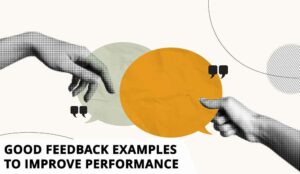Performance management and quality monitoring are key to running a well-managed contact centre. But to do this you have to cobble together a disparate set of management practices and different technologies.
At a recent workshop, run by Martin Hill-Wilson,* a number of contact centre professionals discussed what the performance management system of the future would look like.
As part of the workshop we explored what would make for an ideal performance and quality management system. Here I summarise some of the key findings.
1. Measuring the right things
The general feeling was that the whole measurement system needs to be changed. There needs to be a move towards behaviours and outcomes, and not so much concentration on efficiency-based metrics such as average handling time.
- “Do whatever you can within reason to resolve customers’ issues first time.”
- “It is around not being challenged around numbers but instead concentrating on building behaviours. The system should deploy behavioural metrics – measurements that are linked to bring up overall trends and potential solutions – measurement based on change and shift in focus.”
- The team leader focus could then shift from managing the “number” to managing, coaching and understanding the behaviours that drive performance and quality performance – focus on what’s best for the customer.
- “Throw away the KPI deck!! Well, actually, not literally, but remove the majority of it from the advisors’ view/awareness. I would leave them with visibility of measures such as ‘talk utilisation’ (the % of total logged-on time that they were in available waiting to talk or talking to a customer) and customer satisfaction.”
- If you get this right, and the business strategy is aligned to this, you will drive company performance and build a loyal ‘fan base’ of customers.
2. Building customer feedback into the process
One factor that seems to be missing from quality reviews is that they often focus on what the customer said on the call, not how it made the customer feel.
- Every customer should have the ability to rate every transaction, with that data feeding directly to the advisor for self-management. It should be possible for customers to describe their emotional state following the interaction and for this to be correlated to extended loyalty/increased advocacy.
- The system should close back the loop through an interactive customer survey that feeds directly back to the agent to help improve the quality process.
- “It is not how the customer made you feel. It is how you made the customer feel.”
- Everything should revolve around measuring the impact on the customer rather than the side effects of these impacts. There should be automated MI/reporting rather than lots of manual intervention and building of spreadsheets.
- There should also be more open social media feedback.
3. Self-management and peer review
Self-assessment is an incredibly powerful tool in the contact centre – particularly if it is combined in a buddy system. It was summed up as “We are our own worst critique specialists”.
- Advisors could be given a structured environment that would allow them to self-review and peer-to-peer review. Quality would be broken down into smaller elements to ensure a wider capture of performance. Feedback and training would be based on the same small elements, allowing a more bespoke resolution to the flagged performance issues.
- Self-managed performance could be supported by coaching by exception from a team leader focused on problem resolution and customer experience.
- Remove incentive (bonus) schemes linked to achieving set KPIs and instead move to a recognition approach that reinforces what good looks like.
- A large database could be created where agents can access/listen back to all of their calls from that day. This coaching would allow the agent to remember and embed the information as they are involved from the initial monitoring process.
- Get the agents to feel positive about the quality monitoring process. Get more support from team leaders. Get the agents involved a bit more. Make it more interactive, more fun.
4. Help team leaders to provide coaching
Team leaders need to spend less time managing the “number” and more time coaching staff.
- Team leaders would be given plenty of time to coach their staff and provide concise feedback. Provide incentives to the top performers, rewarding for great customer satisfaction, or customer experience. Provide suggested calls for team leaders to listen to.
- Line managers have at least 1 full day each week to spend side by side coaching their team. A straightforward electronic means through which the agent and the manager can write their input for downloading into their personal performance data.
- Universal sampling. Retrieval of initial conversation as evidence. The advisor can see how the quality process helps them.
- “My biggest wish is to move away from this numbers concept of we should be listening to 5 calls per agent or 5% of calls per agent and start focusing on what types of calls and agent needs us to monitor and feedback on. For example, if I have an agent who is scoring poorly on first touch resolution let’s listen to calls for him/her where the customer has then called back. Less random monitoring and more targeted monitoring at where the agent really needs our help.”
- An easy-to-use system that pinpoints where an agent is going wrong.
5. Immediate feedback
There is a real desire for a system which monitors every call and gives immediate feedback, rather than the current situation where feedback tends to happen some considerable time after the phone call.
- Highly visible and immediate feedback opportunities for both external and internal customers to provide on their experiences. There is no other more effective trigger to improve performance and quality than direct feedback from the receiver. Building immediacy into this process would allow the comments to be acted on at the time, therefore maintaining the relevance
- Agents seek feedback. Customers are willingly involved in the process. It is efficient with clear benefits linked to activity. Agents self-evaluate.
6. Process should be highly transparent and calibrated
There needs to be full transparency and calibration across the whole quality system – something that is difficult given how subjective this can be.
- Full transparency. Let the customer decide whether good service was provided. It’s only good service if the customer believes so. Link pay to quality and compliance to a greater degree.
- Observations and feedback must be timely and consistent across teams. It should also be calibrated.
- Seamless identification of errors/excellent work. Consistent objective marking, removing the need for human marking. Aligned with self-marking every day for advisors.
- Constant, competitive and transparent. Certain data to be published for other agents to see. This would inspire customer experience competition etc.
7. The right software tools
There needs to be a move towards more of an integrated quality system rather than a collection of disparate (often Excel-based) systems.
- Move away from Excel to industrial tools. A move to analytics and all decisions to be supported by data.
- Speech analytics – monitoring a higher % of calls, picking out key words/phrases and identifying development areas and failures. This will allow a team of quality monitors to coach and interact more with staff.
- Simultaneous screen and voice recording systems that agents can submit calls for feedback.
- Voice of the customer feedback at the point of contact. “How are you feeling about our service right now?”
- Live feedback to agents and team managers/operations managers from post call CSAT surveys – (ticker tape to the individual agent’s screen giving feedback on what customers are saying about their service in real time). Self-evaluation tools.
- As well as monitoring the voice channel, the performance management system needs to be extended across all channels including email, social media and web chat.
Summary
There seems to be a real drive to produce a comprehensive performance management system that combines best practice management practices coupled with integrated technology.
The final word on all of this possible change goes to one respondent who pleaded for more time to get the right processes established.
“Don’t try and resolve all issues at once. Prioritise the most important changes and the quick wins and target these first. Give things time to embed before changing again.”

Martin Hill-Wilson
* The workshop was carried out by Martin Hill-Wilson and was kindly sponsored by Speech Analytics company Nexidia. It was based on the views of around 150 contact centre professionals that Martin had surveyed.
A LinkedIn group, with the aim of developing next-generation best practice for performance management has also been created.
Author: Jo Robinson
Published On: 2nd Jan 2013 - Last modified: 15th Aug 2025
Read more about - Customer Service Strategy, Customer Feedback, Employee Feedback, Metrics, Nexidia, Performance Management, Predictions, Service Strategy, Training and Coaching, Utilisation









































Jonty,
A great summary of what everyone has so far provided as feedback. It has helped provide a really useful perspective on the major themes.
Glad you mentioned the Linkedin group. It is called P&Q cmpaign and can be found in the Linkedin group directory. All who are interested in crowdsourcing with the rest of us, an operating manual on next generation performance and quality are very welcome to join.
We aim to have the first draft out by Easter 2013.
Martin